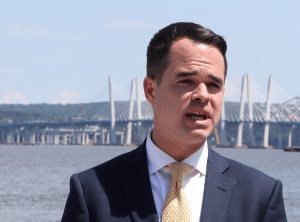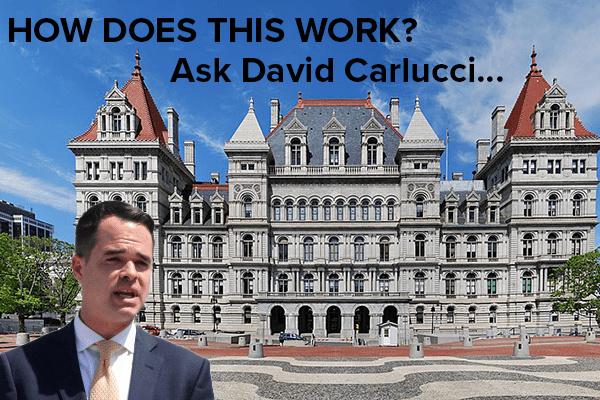|
RCBJ-Audible (Listen For Free)
|
Governor Hochul’s $400 Million AI Plan Has Potential To Reshape New York’s Economic & Technical Landscape
By David Carlucci
Artificial intelligence, or AI, has been all the rage ever since ChatGPT became a widely used platform for generating text. But AI’s capabilities surpass intuitive chatbots like ChatGPT. Artificial intelligence is an umbrella term for any technology substituting human intelligence with machine learning. Like smartphones, AI tech may be utilized anywhere from education to criminal justice, the arts, medicine, politics, and even at home.

Recognizing AI’s vast scope, it is no wonder that numerous public and private entities have eagerly embraced this technology. Many companies, countries, and states have begun pouring capital into artificial intelligence in hopes of leading the digital revolution. Enter Empire AI.
Empire AI, a strategic initiative with the transformative potential to reshape New York’s economic and technological landscape, is New York’s ambitious plan to position the Empire State as a leader in the global artificial intelligence movement. The initiative brings together New York State universities, businesses, and government agencies, focusing on the research and innovation of artificial intelligence.
Through this collaborative consortium, Hochul believes New York State will attract job growth and produce technology that best serves the public interest. Additionally, Governor Hochul sees collaboration between academia and the private sector as a means to bridge the gap between small businesses and expensive AI technology, fostering a more inclusive and innovative environment.
The Empire AI plan is built on the pillars of private sector investment, public education, and regulatory policy. These pillars ensure AI is harnessed for the greater good, not just for profit.
While unveiling Empire AI on January 8th, 2024, Hochul also revealed the price tag of over $400 million in a public-private partnership. Seven New York institutions will be at the helm: Columbia University, Cornell University, New York University, Rensselaer Polytechnic Institute, the State University of New York, the City University of New York, and the Flatiron Institute. These institutions will work in partnership with one another and private companies to bolster research, development, access, and educational opportunities related to AI.
Despite being announced in January, the Empire AI consortium got its legs this April following the State Legislature’s passage of the 2025 fiscal year budget. Among thousands of pages of government projects, the budget included a decade-long $275 million investment in a state-of-the-art AI computing center at the University at Buffalo as the hub for Empire AI research. Next up, Empire AI will receive an additional $125 million from public and private partnerships such as academic institutions and philanthropic giants in science and technology like the Simons Foundation and Tom Secunda, co-founder of Bloomberg LP and the Secunda Family Foundation.
But money isn’t everything. In addition to the historic financial investments made into artificial intelligence, the Hochul Administration also recognizes the need for protection against malicious uses of AI. As part of her FY 2025 Executive Budget proposal, Hochul included legislation implementing several safeguards ensuring the ethical use of AI. Her original proposal included measures against malicious deepfake technology, requirements for using AI in political communications, and general restrictions against “unauthorized use” of AI.
The finalized budget did not include everything on Hochul’s wishlist. Still, it did implement requirements that all forms of political communication disclose the use of potentially deceptive media, which provides for artificial intelligence technology. However, with AI still being at the top of the minds of voters and legislators alike, it is expected that many new laws at the State & Federal level will be implemented regarding AI.
David Carlucci consults organizations on navigating government and securing funding. He served for ten years in the New York Senate.











